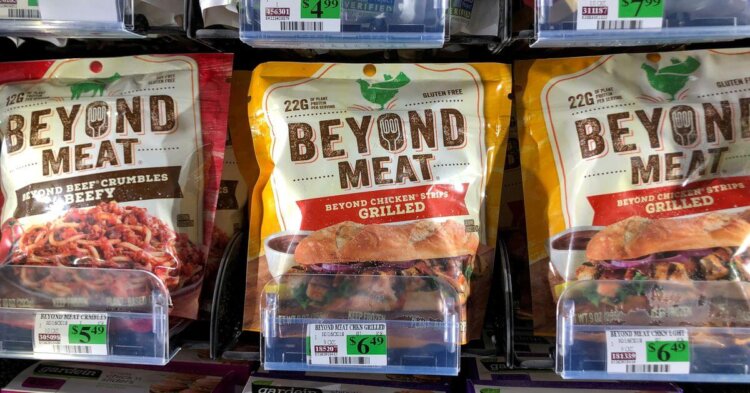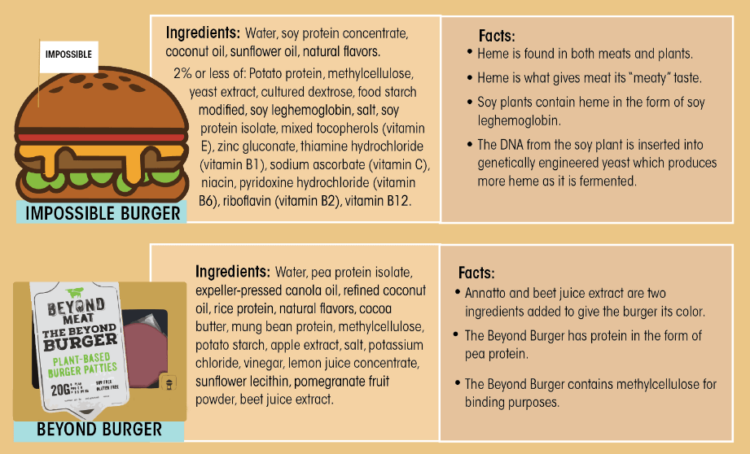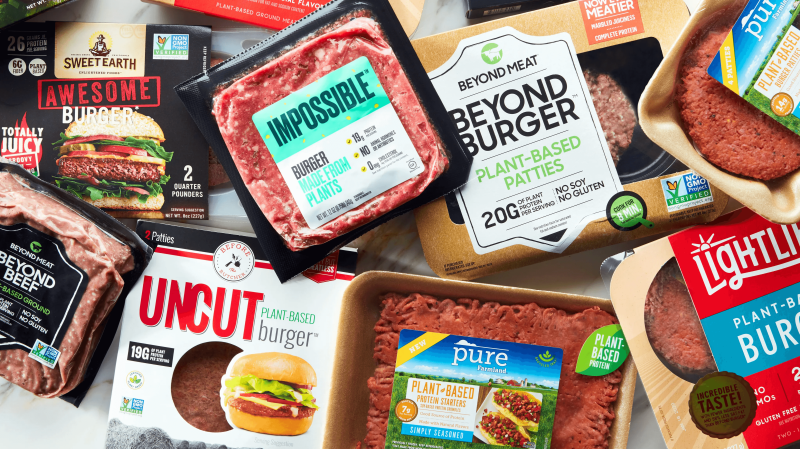The Wall Street Journal says, “Beyond Meat is Beyond Hope.” Its stock has dropped from $14 billion (2019) to $1.6 billion. The potential is still there but may not be realized until alternatives are both cheaper and healthier than alternative proteins. They are still about twice as expensive here but are already cheaper in the Netherlands.

- Give or take, there are 630,000 cattle, 2,675,000 hogs and 179,000,000 chickens slaughtered weekly in the US (Source: NASS).
- The world’s population is expected to grow by 2 billion people in the next 30 years, from 7.7 to 9.7 billion.
- Livestock takes up to 80% of global agricultural land but only produces 20% of the world’s supply of calories. Cow’s alone take up 127.4 acres of land for pasture and feed in the U.S (about 41% of all U.S. land).
- It takes 100 times as much land to produce a calorie of beef or lamb versus plant-based alternatives.
- Use of antibiotics in farm animals is still a huge threat to humans.
There is not enough land to provide animal protein to the world’s growing population. In addition, the whole idea that alternative proteins are “fake” compared to animal protein is wrong.
Cows have also been bred to adapt to droughts and changing food supplies. The earliest cattle were bred somewhere in the Fertile Crescent about 10,500 years ago. Before the Chillingham cattle (pictured above), cows were originally much bigger and fiercer making them hard to capture. Eventually, however, a British agriculturist had to breed cattle to be bigger and meatier.
Europeans began breeding pigs 11,000 years ago to get rid of their tusks, coarse fur and to produce tender, fatty meat.
As for chickens, Tom Standage points out in An Edible History of Humanity, “…. chickens as we know them do not occur in nature, and they would not exist today without human intervention…The simple truth is that farming is profoundly unnatural.”
People like the taste of meat and that alone explains why we have plant-based and other alternative forms of meat. Threatened by these new forms of food, producers and others call it “fake” meat. Although, if human intervention makes it fake, then all food is fake. In addition, a list of ingredients, actual chemical ingredients, between a hamburger and the Impossible Burger, shows a long list of chemicals in both.

Here’s another interesting likely fact: we are not going to go back to work the way we did and many office buildings, restaurants and perhaps even malls may be deserted. What are we going to do with them? One possibility is using that space to grow proteins and other macronutrients using precision fermentation and other new food technologies. Some may also be used for vertical farms. This accomplishes several things at once. Our food is much more likely to be pathogen-free, it is better for the environment and it can be produced closer to communities where food insecurity is a problem. Ultimately, the food should also be cheaper, and it can be manipulated much more quickly to be more nutritious.
Big food companies can see what’s coming and they are investing in a lot of emerging food brands using new technologies. It’s called “creative destruction,” and it’s how humanity advances. Yes, it means some traditional jobs will no longer be available, just as happened to those who developed Kodak camera pictures, manufacturing workers being displaced by 3D printers, agricultural workers replaced by automation, and job recruiters replaced by Indeed. Go back further and see how those who made carriages and buggy whips lost out to disruptive cars.
It’s understandable that incumbent manufacturers and ranchers will try to scare people away from new technologies and to denigrate foods as “fake” or “unnatural,” but, like Sisyphus, they will roll that boulder up a hill forever only to see it roll back down. Between economics, feeding larger world populations, environmental concerns, and safe and healthy eating, I would not assume that alternative proteins and other new foods are “beyond hope.”
Richard A. Williams, PhD, is an economist and author. He’s the chairman of the board for the Center for Truth in Science and on the advisory board to the Institute for the Advancement of Food and Nutrition Sciences. He served as the Chief Social Scientist at the FDA’s Center for Food Safety and Applied Nutrition for 27 years. Visit his website and follow him on LinkedIn
A version of this article appeared originally at LinkedIn and is posted here with permission. Check out LinkedIn on Twitter @LinkedIn































